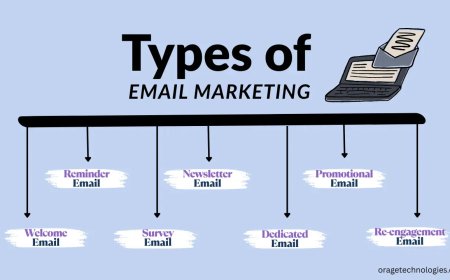Back Office BPO: Fueling Efficiency and Profit
Unlock the potential of Back Office BPO in 2025. Learn its services, benefits, revenue models, and human capital needs to streamline operations and boost profits.

Front Office BPO gets the publicity and headlines for dazzling customers, but Back Office BPO is the engine room that keeps businesses ticking along. Back Office to Front Office, it's credit control to IT service desk and all of those activities in between that link and run critical business operation work. What do companies save money on and still maintain focus on their goals? Let's look into what Back Office BPO is, the services underpinning, benefits and how it makes money for business and providers. What is Back Office BPO?
What Is Back Office BPO?
Back Office BPO (Business Process Outsourcing) involves outsourcing a companys internal, non-customer-facing processes to third-party outsourcing professionals. Unlike Front Office BPO, which is client-facing, Back Office BPO delivers support processes, such as accounting, claims processing, data entry, human resources, and IT. While these tasks dont make a direct revenue contribution to the company, they contribute to the overall efficiency of the company. BPO progress will likely come from numerous industries, including, but not limited to: healthcare, telecommunications, real estate, and government agencies.
Core Back Office BPO Services
BPO covers the major areas of operational business processes. This is what it involves:
1. Data Management and Administration
Outsourced data entry, claims processing, and form handling are sourced with quality diligence, and secured with data protocols, which also includes a predetermined level of processing time. Outsourcing allows teams to concentrate on strategic outcomes, while also making their front-office process speedy and effective in what they do.
2. IT Support
Service providers will manage non-client facing IT support processes: software resolution/ troubleshooting tasks, hardware maintenance/management, and network support/failure. Communication of product availability happens via ticket-based software automation (from a remote location), making the process easier to start and manage. Data protocols and data recovery plans minimize compliance failures and reduce risk of data breaches.
3. Finance and Accounting
Providers utilize tech for precision-and-compliance financial reporting, from accounts payable/receivable to budgets and audits - reducing errors and compliance risks.
Why Use Back Office BPO?
Back Office BPO is advantageous for both Companies and Providers, whether onshore or offshore.
For Companies
-
Cost Efficient: Onshore outsourcing can cut 20-25% off your overhead by removing employee salaries and capital for equipment; offshoring can reduce costs by 40-60% depending on the location and processes. Manpower costs will be reduced by an estimated 30-35% onshore or 50-60% offshore; IT / infrastructure and equipment usually save 65-70%.
-
Specialized Skills: Specialized teams help achieve consistency of process with high levels of accuracy.
-
Scalability: Use flexible services for seasonality, turnover, or growth/expansion without the headache of hiring.
-
Risk Mitigation: Outsourcing providers will help you manage some of the risk as they are now responsible for compliance and disaster recovery, protecting your operations.
For Providers
-
Predictable Revenue: Multi-year contracts provide you with a base revenue growth year over year with predictable earnings.
-
Service Expansion: Offering HR, finance, and/or IT service capabilities will drive ROI and satisfaction.
-
Globalization: Offshoring companies can still be competitive despite fluctuations in the currency exchange due to the gap between the cost of living and the cost of services where they are located. If you are doing business onshore, speed and compliance should be your primary deliverables, not as important as the time-zone difference.
-
Referrals: Quality. When you deliver a quality product or service, referrals can be a natural benefit to building client trust.
The impact of Back Office BPO
For Companies
Outsourcing improves profits through cost reduction. Coupled with operating cost (workforce) savings of 30-60%, fixed infrastructure cost savings of 65-70%, and productivity increases of 15-25% due to reduced tactical distractions and more strategic focus. Savings can be reallocated toward revenue generation and other efficient resource management.
For Providers
Providers realize revenue through service fees, per-seat fees, reducing costs through economies of scale by sharing overhead (payroll, technology costs are shared among clients), and opportunity for revenue enhancement with performance-based bonuses. Also, the longer the provider and client engage, the greater probability of referrals and cross-selling leading to widespread awareness and credibility of the provider.
Human Capital in Back Office BPO
For Companies
A team of only three individuals can manage a successful outsourcing strategy:
-
Contract Managers: responsible for onboarding and development of the provider services agreement.
-
Operations Staff: handle operational questions that arise daily.
-
Accounts Staff: are responsible for initial invoice screening and approval.
We can only hope these three roles assist successful operations!
For Providers
The number of staff hired depends on the role of the task. In the case of data management:
-
Data Operators: perform data input into OCR (optical character recognition) platforms.
-
Team Leads: manage workflow schedules and provide training and coaching to operators.
-
Quality Control Analyst: audit outputs to confirm specifications are met.
-
Operational Manager: responsible for deliverables and ensuring operational improvements occur.
If space permitted, we would mention human resources, administrative staff, and heads of department who keep the organization operating for the client stakeholders.
The Broader Implications
Back Office BPO stimulates economic growth by developing jobs and careers locally and internationally. Entry-level agents receive guidance from team leaders and can then grow into operation management roles, standardizing processes and retention initiatives. Accounting teams manage the accounts, while respective HODs are responsible for ensuring the client's satisfaction.
Final Thoughts
In its purest form, Back Office BPO changes the dynamics of business by taking internal processes and outsourcing them, resulting in cost savings and a renewed focus on core business activities. The outsourcing company can then become more efficient and gain tighter processes, while the provider market has consistent revenue, often, with the added benefit of providing internationally localized services.
Frequently Asked Questions
What is Back Office BPO?
It is outsourcing your internal processes like data processing, IT, or finance to an external provider.
How does Back Office BPO achieve cost reductions?
By outsourcing onshore operations, you can typically save up to 20-25%. When you outsource operations offshore, you can typically achieve a savings of 40-60%. In addition, you will see labor advantages from Around 30-60% plus infrastructure advantages (i.e. shaded or off-peak hours) upwards of 65-70%.
Who uses Back Office BPO?
Healthcare organizations, telecommunications companies, real estate firms, and even government agencies utilize and derive value from Back Office BPO.
How do providers earn money?
Providers earn fees or a per-seat/hourly rate depending on the type and size of the project or the desired services. While generating incentives for internal processes, utilizing or requesting referral candidates subsequently generates new provider markets.







































